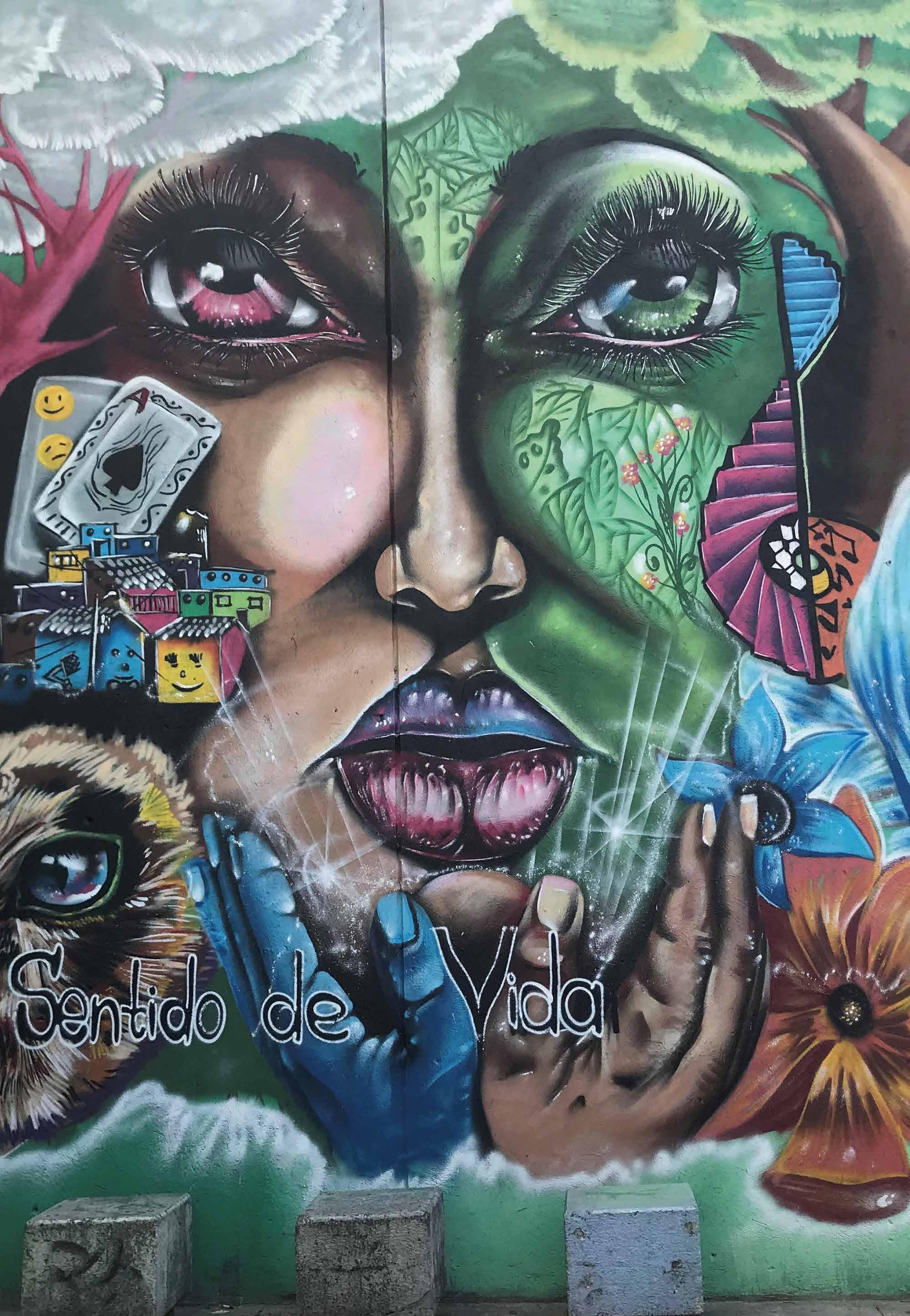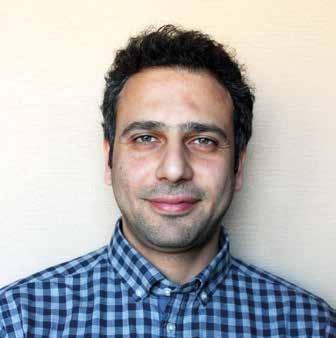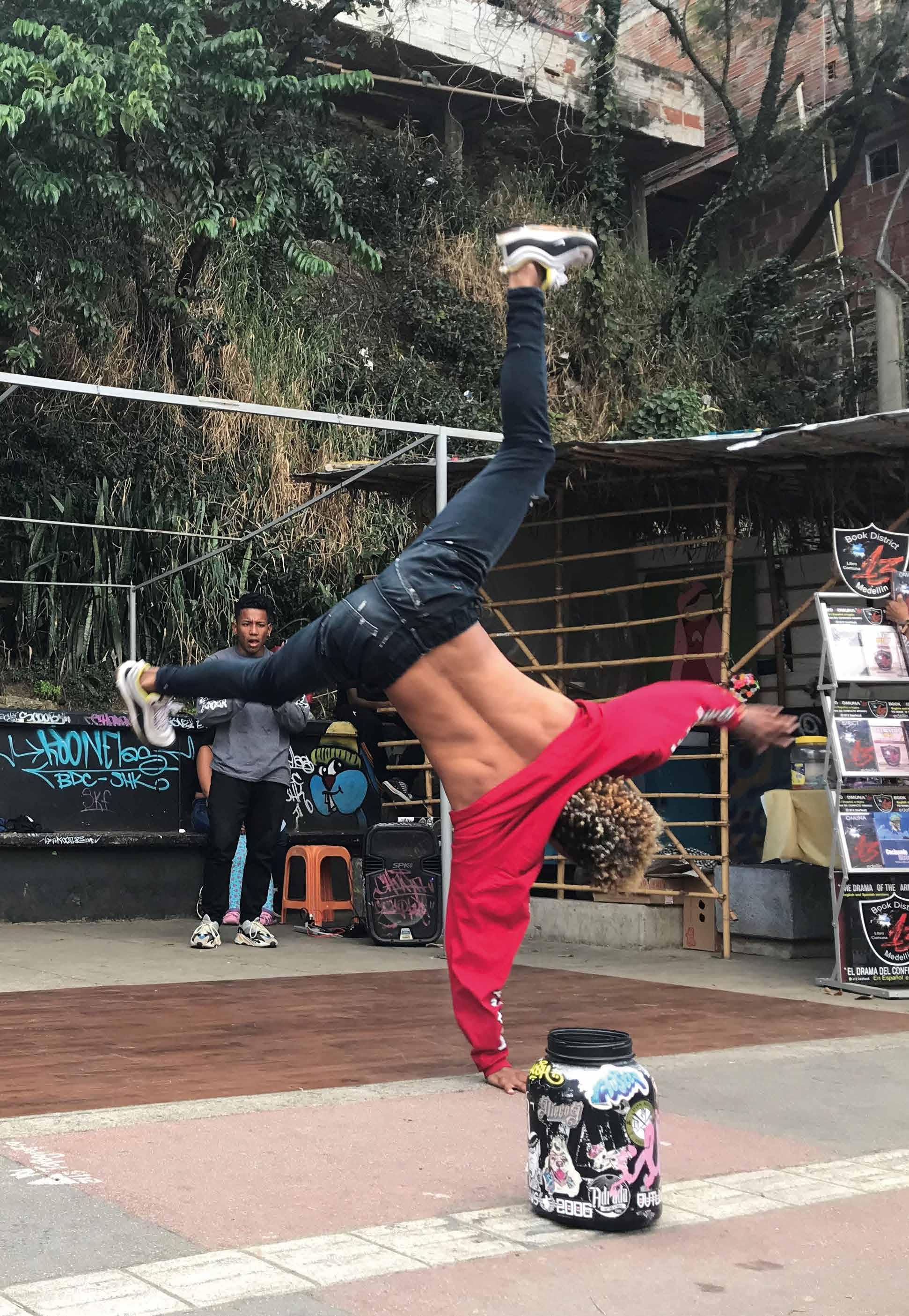
13 minute read
Findings
from The Art of Peace
by ccse_uws
What the academic evidence says
The University of the West of Scotland’s literature review provided an overview of the academic evidence base and suggested a number of key findings. The research base on the contribution of culture to conflict resolution and post-conflict recovery is small,4 but growing.5
Advertisement
The academic evidence base has a particular focus on the therapeutic use of the arts in post-conflict contexts6 and its role in reconciliation and strengthening civil society.7 The literature examining the upstream and preventative potential of culture is smaller.8 However, the benefits of culture for neutralising the attraction of – for example – violent extremism or inter-ethnic enmity – is recognised.9
The review found that arts have a particular ability to engage people in a way that resonates with their local society. Arts interventions have broad appeal and can be applied flexibly, so they are ‘well placed to engage… [people] through the development of a stronger sense of place, increasing individual confidence, and facilitating understanding’.10
Numerous examples of the role of the arts in post-conflict reconciliation were highlighted in the review. Music and storytelling based on shared cultural experience were shown to enable people to communicate across ethnic or religious lines, thereby encouraging reconciliation. Rwanda is a notable example, where cultural programmes drawing on shared cultural heritage have been central to the government’s efforts to create a unified Rwandan identity and heal ethnic divisions exacerbated by the conflict. Another example cited was a case study on Colombians using music to recover after conflict.11
There is a growing body of literature suggesting culture can benefit conflict resolution and prevention. In Uganda the use of song to suggest that former combatants should not be stigmatised was credited with contributing to the end of decades of conflict.12 In Turkey, youth music initiatives based on the Venezuelan ‘El Sistema’ system have contributed to crime prevention by engaging at-risk youth in music.13 In Nigeria, studies have discussed the powerful potential of music to dissipate inter-ethnic conflict, and transmit positive messages of good citizenship and civic responsibility.14 The arts have long provided a platform for expressing opposition, challenging the status quo and resisting oppression peacefully. In apartheid-era South Africa, music and dance provided a voice for the black population when all other avenues of political expression were closed to them.15 In Mexico, public murals have long been used as a non-violent means of protest.16
However, the ability of the arts to transform conflict in and of themselves must not be overstated.17 Indeed, they can even be exploited to pursue violent and exclusionary agendas.18 Several authors show how music was exploited in the Rwandan genocide.19
In summary, the academic evidence demonstrates the particular value of cultural programmes in supporting reconciliation and recovery in post-conflict contexts, while also stressing the potential for negative effects under certain conditions.
Lessons and examples from the field
The use of arts and culture to address issues of conflict is wide-ranging. Programmes can be found at all stages of the conflict cycle, from prevention to post-conflict recovery. They range from the large to smaller-scale. They can be state-led, international, initiated by cultural relations organisations; or bottom-up, led by communities and NGOs. This variety reflects the strength of the arts as a medium that can engage a broad range of people in their own cultural language, and which can be adapted flexibly to local contexts. The review looked at a wide variety of cultural projects in different fragile and conflict-affected contexts. The researchers produced case studies of cultural programmes carried out in three countries at various stages of conflict and peace: Colombia, Syria and Rwanda. Very few of the programmes reviewed aimed explicitly to improve security and stability, but instead saw the principal outcomes as having subsidiary benefit, for example by improving community cohesion and resilience.
Colombia
Colombia is ending a five-decade internal conflict that has left more than a quarter of a million people dead and seven million displaced. The signing of the peace accord in 2016 marks the end of the armed conflict; however, the process of building a stable and enduring peace is in its early stages. Alongside the Colombian government’s recent decision to invest in the ‘economía naranja’ – the orange economy of the creative industries – a wide range of cultural and art initiatives are being carried out to help rebuild social relations and resilience. They offer a more neutral ground for mutual understanding than explicit peacebuilding activities, because they bring people from different groups together around a shared interest and goal, rather than around issues related to the conflict.
Youth music
Based on the model of Venezuela’s National Youth Orchestras, Colombia’s National Batuta Foundation seeks to provide space for coexistence for young people affected by conflict and poverty. Over the last 17 years it has provided quality musical education with a focus on collective practice. Its Music for Reconciliation programme reaches 18,000 young people, using music to help to rebuild social relations and reintegrate victims of war. The programme has helped create a sense of mutual understanding among participants from different walks of life, contributing to reconciliation. Participants report that the experience builds their resilience and reduces their vulnerability to violence: they feel protected against the risks of their social contexts (recruitment by guerrilla groups, links to criminal groups, and drug addiction, among others); they expand their social networks and improve the quality of interaction with their family.20
Arts and crafts
The Sensory Expedition is an arts-and-crafts programme launched by the Ministry of Culture, which helps communities come to terms with the past and gain practical skills for the future. It operates in Montes de María, a poor, multi-ethnic area which has suffered high rates of violence and forced displacement. The programme engages the community in music and training in local arts-and-crafts traditions to value intangible cultural heritage, promote community reconciliation and increase incomes. In its first year, the project has reached 2,100 people and is being extended to other municipalities. The programme has not yet undergone an annual impact assessment, but the findings of the first year indicate that the programmes have helped communities address issues around identity and that the arts have acted as a non-threatening path for dialogue.
Syria
Syria’s seven-year civil war has caused massive destruction to infrastructure, cultural heritage and the social fabric. The sectarianisation of the conflict has damaged traditional values of co-existence between Syria’s majority and minority communities, and disrupted the sense of a common Syrian culture and identity. Organisations working in the arts and culture have primarily focused on safeguarding cultural heritage or supporting artistic production. However, a number of cultural projects have been used to foster trust between different communities, and help them build a stronger sense of belonging.
Art therapy
The number of street children in Syrian cities has risen significantly since the start of the conflict in 2011. Without support, they are vulnerable to exploitation by criminal gangs and as child labourers; they also risk involvement in stealing, prostitution and drug dealing. Saiyar is an arts charity, which has reached over 2,000 children since 2015. It aims to give street children the skills to improve their lives and reduce their vulnerability. Art therapy helps improve well-being and social skills, and helps them deal with pressures and traumatic experiences, while exhibiting and selling their work builds their communication skills and bolsters self-worth.
Theatre
Staged in 2015, The Prophecy used major events in Syrian history to reflect upon the current conflict and encourage feelings of hope, tolerance and understanding among Syrians. By demonstrating how Syria’s civilisation has survived previous periods of turmoil, it aimed to help audiences imagine a better future after the conflict. The performance was staged in a range of settings around Syria in a bid to attract a varied audience and bring Syrians together around a sense of a common past. While no formal evaluation was carried out, the director suggested that the play increased empathy and a sense of shared identity among audience members.
Rwanda
Rwanda has a long history of identity- and ethnicity-based conflict, culminating in the 1994 genocide. An estimated 800,000–1,000,000 people, mainly from the Tutsi minority, were killed in systematic massacres over a three-month period. In subsequent decades significant effort has been invested in reconciliatory activities, in particular drawing upon aspects of shared cultural heritage and national identity, with specific initiatives in areas of civic education and memorialisation. The conflict has not re-erupted. An extensive research study in 2012 noted the importance of the government’s cultural education activities, saying that they had helped the next generation ‘abandon old ethnocentric views and to embrace a proud national identity and a commitment to carrying forward the government’s agenda of unity, reconciliation and development’.21
Cultural education
Itorero is a government-led citizenship and cultural education programme launched in 2007, centred on national and community service programmes for those aged 18–35. Drawing on Rwanda’s cultural history, the initiative is based on the 17th century institution of Itorero, a cultural and civic ‘school’ for Rwandans. The tradition is part of a shared cultural heritage between Tutsis and Hutus, and has been recognised by scholars. Papers reviewed for this study have noted that it has ‘changed the minds’ of Rwandans by teaching them about the government’s vision of unity and ‘national reconciliation’,22 and has fostered ‘Rwandanness’ rather than divisive ethnic affiliations, while also promoting integrity, hard work and self-reliance.23
Film and theatre
Never Again Rwanda works with those affected by the genocide and seeks to encourage ‘creative, active and critical thinking’ citizens through films, discussion and group work. Sessions are facilitated by a trusted member of the community who understands the sensitivities of the local context. Activities include storytelling, group theatre, poetry and drama, and draw upon Rwandan culture and values. Its learning approach aims to influence young people’s ‘understanding of critical thinking, values, rights, democratic principles and responsibilities’. Those working on the programme reported that it had some impact on participants’ recovery from trauma.24
Remembrance and ceremonies
The arts play a central role in Kwibuka, the annual commemoration of the 1994 genocide. A key focus is the Flame of Remembrance, which tours around the country each year in a similar way to the Olympic flame, with communities marking its arrival with their own ceremonies, including community performances of theatre, music and poetry.25 The events are designed to focus on remembrance, reconciliation and rebuilding. Commentators have observed that the commemoration provides a ‘framework for conflict resolution’ that is an example for other countries.26 However, some scholars have cautioned against top-down approaches to remembrance.
21. Bentrovato (2015). 22. Melvin (2013: 116). 23. Nzahabwanayo et al. (2017). 24. Executive Director of Never Again Rwanda, quoted in McPherson et al. (2018). 25. Kazibwe (2017). 26. Journeys Discovering Africa (2014).
What can culture deliver?
As with other types of intervention, cultural programmes do not provide any simple solutions to the complex issues of conflict and peace. An arts exhibition or community theatre project will never have the power to stop violence directly. However, the literature and programmes under review demonstrate that arts programmes, if designed and managed well and sustained over the long term, can make an important contribution to conflict prevention and recovery at a local level. Furthermore, arts as a process and an approach can have significant impact on individuals, communities and society at large and contribute to an enabling environment for peace. In ‘hotspot’ areas where violence is exacerbated by ethnic tensions or socioeconomic marginalisation, cultural programmes can help defuse tensions, promote reconciliation, offer alternative pathways and equip communities with the skills, resilience and networks they need for post-conflict recovery. The review has identified the following key benefits of arts and cultural programmes to security and stability:
Community engagement: artistic and cultural activities can engage a wide audience in a way that resonates with their cultural background. They are an effective forum for community collaboration and for engaging marginalised communities. Skills for employment: training in the creative industries can provide marginalised young people with a way out of unemployment and hope for a better future, providing an alternative to that offered by violent groups, while creating economic benefit for the wider community. Inclusive development: policy work can provide impact at scale by working with government to integrate cultural policies into regional and national-level development strategies. Therapeutic interventions can provide significant benefits during and after conflict, helping communities to survive a difficult time and process the trauma of conflict and displacement. Social cohesion: cultural activities based on a shared common heritage can build a sense of community and provide a platform for dialogue and moderate narratives. Storytelling provides a way for divided communities to address stereotypes. Voice and agency: in areas where traditional protest is difficult, the arts can provide an alternative outlet for expression. They can help give voice to marginalised communities and provide them with a sense of agency.
The broad range of benefits demonstrated by the review highlights the flexibility of artistic and cultural approaches, and their special potential to bring about changes in social attitudes, behaviour and well-being, and to promote inclusive growth. The quality of impact evaluation is mixed and requires much more work to develop a strong evidence base, but what exists indicates that further research to maximise the contribution of culture to peacebuilding initiatives is warranted. The review also calls for consideration to be given to the potential for increased impact when arts and cultural programming are combined with other types of intervention, in particular sport.
Practical challenges
As with any type of intervention, running cultural programmes in fragile and conflict-affected countries is a challenging process. The usual problems are magnified in conflict zones, where physical safety is threatened and normal governance has broken down. The ‘Do No Harm’ principle is critical for any kind of intervention in a fragile context, to mitigate the risk of inadvertently exacerbating conflict. This is particularly the case where a project seeks to bring different groups together, and to broach difficult issues around identity, culture and conflict. In the context of cultural programming, the research identified a number of key risks and challenges, some of which also apply to other areas of intervention:
Unrealistic expectations: interpretation of the meaning of the arts is highly individual, and based on life experience. Achieving a specific change in attitude or behaviour cannot be guaranteed.27 Evaluating impact: the limited evidence base of ‘what works’ has an impact on future programme development. These limitations are partly the result of a lack of experience and funds for evaluation in small-scale programmes – managers know their programmes have impact, but do not have the skills to demonstrate it. There is also a particular difficulty with measuring the kinds of intangible outcomes sought by many cultural programmes.
Top-down approaches: NGOs need support from the state, but also need space to act independently of it. This is particularly true in the sphere of culture, which can be used to reflect on a conflict from a critical, non-political point of view. Likewise, foreign partners can risk partnerships in a country becoming a one-way exchange, where pre-existing templates are applied without due concern for local conditions, and where local partners do not feel that their own expertise is valued. Lack of conflict sensitivity: programmes that are implemented without an understanding of the conflict dynamics in the local area are unlikely to provide security and stability benefits, and may actually risk exacerbating tensions. Scale: many artistic and cultural projects are smallscale and work at the community level, responding to specific local conditions, meaning they are not easily transferable to other contexts.
The review indicates that well-targeted programmes can achieve valuable outcomes. It finds that chances of success are likely to be maximised when programmes are locally designed and led, harnessing local cultural traditions and enabling artists and communities creatively to identify and solve the issues themselves. Conflict sensitivity must also be integrated into the programme at the design stage, by conducting a conflict analysis of the programme’s likely impact.





